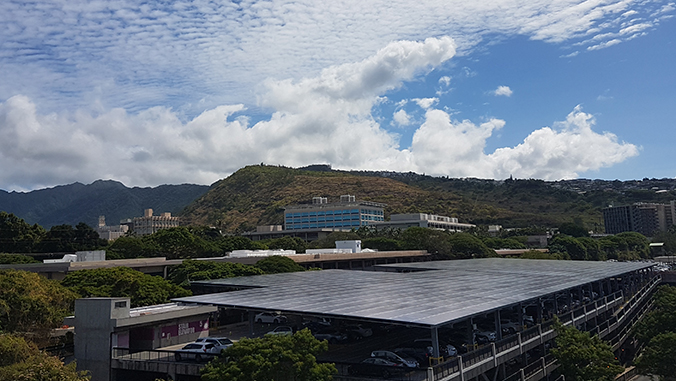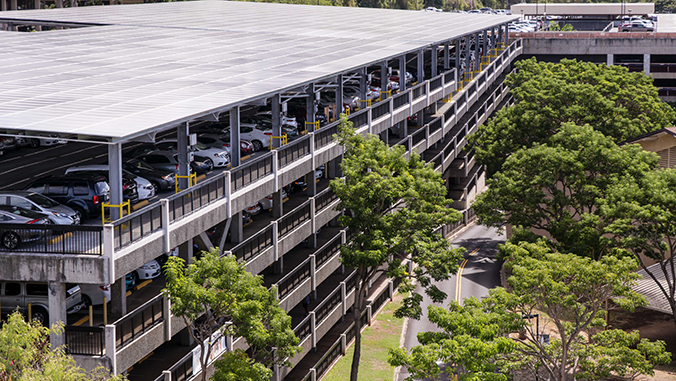
Phase one of the photovoltaic (PV) project on the parking structure at the University of Hawaiʻi at Mānoa began generating electricity at the end of this summer.
This summer, construction crews completed the installation of a canopy of 1 megawatt of PV panels. The panels are expected to save UH about $100,000 a year in electricity costs and advances the system toward the state’s goal of net zero usage by 2035.
“This is completely emission free, and provides shade. But most importantly, leads by example for the students, faculty and staff, and the greater community,” said Miles Topping, UH director of energy management.
Construction teams will work on phase two in summer 2020 for another megawatt of PV panels on the rest of the parking structure. During peak use, the Mānoa campus uses about 20 megawatts, the energy consumption equivalent of around 10,000 to 20,000 residential homes.
The project is expected to save between $2 million to $8 million over its lifetime, depending on future energy costs. You can find more information on how UH is developing energy usage and generation by visiting the UH Energy Dashboard.


